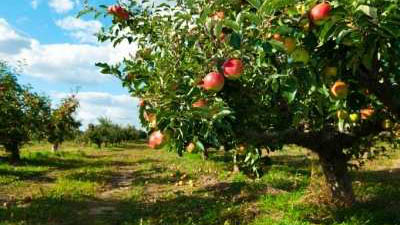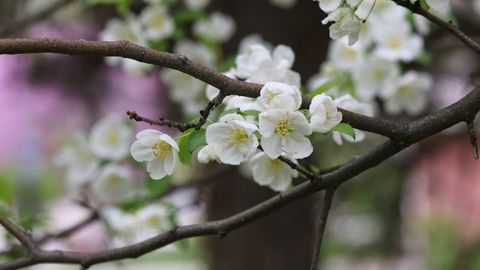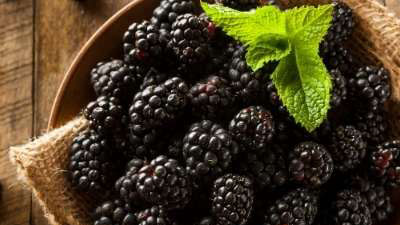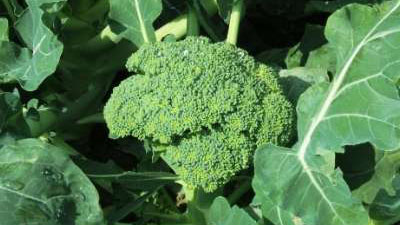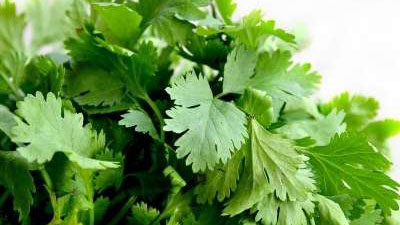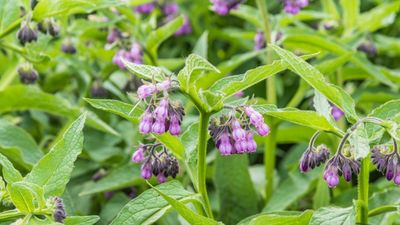How to Grow Almonds in Your Garden
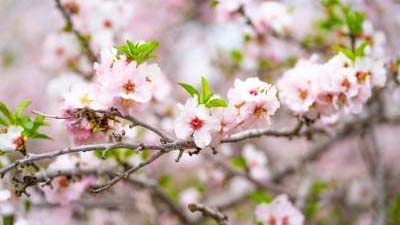
Almonds (Prunus dulcis) are a close cousin to peaches and nectarines, but are not generally as cold tolerant. Almonds are currently not a recommended crop in northern Utah, including the warmest parts of the Wasatch Front. Almonds are found in Utah’s Dixie and are well adapted to that warm climate. This publication will provide basic information on almond culture for warm areas of southern Utah.
Almonds are native to parts of Central Asia and were among the earliest domesticated tree fruits. Early farmers distributed almonds widely in the region. California is the leading worldwide producer of almonds. Cultivars grown in California should be hardy in the warmer parts of Washington County. Edible almonds should not be confused with flowering almond (Prunus triloba) that is often grown as a flowering ornamental shrub.
The Almond Tree
Almonds can become large trees. Trees sold by nurseries are composed of two parts: a rootstock that comprises the below-ground portion of the tree, and a scion that produces the visible above-ground portion of the tree. Rootstocks are chosen for hardiness, disease resistance, and sometimes size control. The scion is chosen for fruit quality, ripening date, and productivity.
As noted earlier, almonds are stone fruits. As opposed to cherries, plums, apricots, and peaches, the kernel inside the pit is eaten in almonds rather than the fleshy exterior. Almonds have a husk that dries as the nuts mature. The husk may fall off naturally or can be removed by hand.
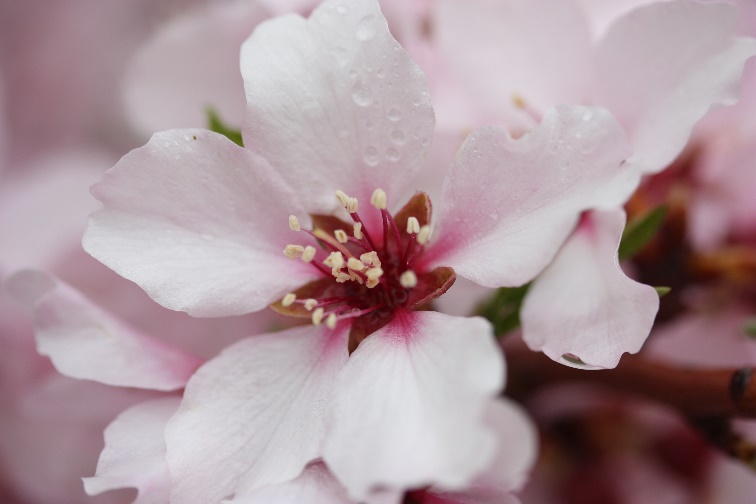
require a second almond tree for cross-pollination and
insectsare required to move pollen between the trees.
Almonds are not self-fruitful. Pollen must come from a different almond cultivar. Peaches may be a suitable pollen source for almonds. However, almonds tend to flower earlier than peaches, but if almond and peach flowering coincide, peach can provide pollen to almonds. Insects are required for cross-pollination. Honeybees are the most common pollinator.
Almond kernels can be bitter or sweet. Bitter almonds contain amygdalin, a glycoside that releases small quantities of hydrogen cyanide when chewed or crushed. Sweet almonds do not contain amygdalin. Almond shells can be hard or soft. Almonds available in local grocery stores near the winter holidays have hard shells and require a tool to break. Soft shell, or paper shell almonds, can be shelled easily by hand. If the objective of having an almond tree is to have almond kernels, the paper shelled almonds are much easier to deal with.
Purchase almond trees from a reputable nursery. Local nurseries or mail order nurseries are both suitable. Doing so ensures that you obtain materials that are true to name, and that are disease free upon purchase. Bare root trees may be purchased in the early spring, or potted trees later in the season. Plant trees promptly after purchase. Don’t allow the roots of bare-root trees or the soil of potted trees to dry before planting.
Almond Cultivar and Rootstock Selection
USU has not conducted trials of almond cultivars in Washington County. But almond trees are scattered in backyards in the greater St. George area. Thus, some almond cultivars are surviving in St. George. A review of nurseries shows that a few nurseries offer two or three cultivars that are rated hardy to USDA hardiness zone 5. These hardy almonds are actually peach almond hybrids with thick hard shells and slightly bitter kernels. Anecdotal evidence suggests that most California almonds would survive in St. George, but there have not been any controlled experiments to support this claim.
Almonds are commonly propagated using peach seedlings as rootstocks. Peaches are hardy in the St. George area. Therefore, most any peach rootstock would be suitable for planting in the area.
The following cultivars, presented in alphabetical order, may be suitable in Utah.
All-in-one
This is a paper-shelled cultivar that is advertised to be hardy in USDA hardiness zone 5. It has a paper shell, a sweet kernel, and is reported to be self-fruitful and somewhat dwarfing.
Hall’s Hardy Almond
This is actually a peachalmond hybrid. While it is winter hardy even in Cache Valley, the nuts have a very hard shell and the kernels are bitter. The showy flowers are beautiful in the spring. It is not recommended for nut kernel production.
Mission
Also called ‘Texas’ is harvested 40-60 days after Nonpareil, Mission has a strong flavor, is not blanchable (blanching softens the skin on the outside of the kernel so it can be removed), has a hard shell with good integrity and no opening around the shell.
Nonpareil
This is a premier cultivar in California. It blooms approximately the 3rd week in February in California’s central valley; matures at the end of August. Kernel is flat, medium-large size with excellent quality and flavor. It has become the basis of the almond industry. Shell is paper thin, often poorly sealed. Tree is large and easily harvested.
Ne Plus
This older California cultivar flowers between Nonpareil and Mission. It has plump elongated kernels that are often coated with candy glazing for marketing. It has a propensity to produce two kernels per nut.
Almond Tree Site Preparation
Before planting, the site should be properly selected and prepared. Select a location that will receive full sun for at least ¾ of the day. Gentle slopes with adjacent lower areas allow cold air to drain away from the planting on cold nights. Almond trees grow quite large, and at maturity will occupy a space roughly 20 x 20 feet (10-12 foot radius from the trunk). Before planting, control perennial weeds around the planting location. Incorporate organic material into the planting location. Compost, peat moss, potting soil, or manure are suitable sources of organic matter. Work the amendment into the top 8 inches or so of the soil. Make sure the soil is well drained, as almonds won’t tolerate wet soils.
Planting the Almond Tree
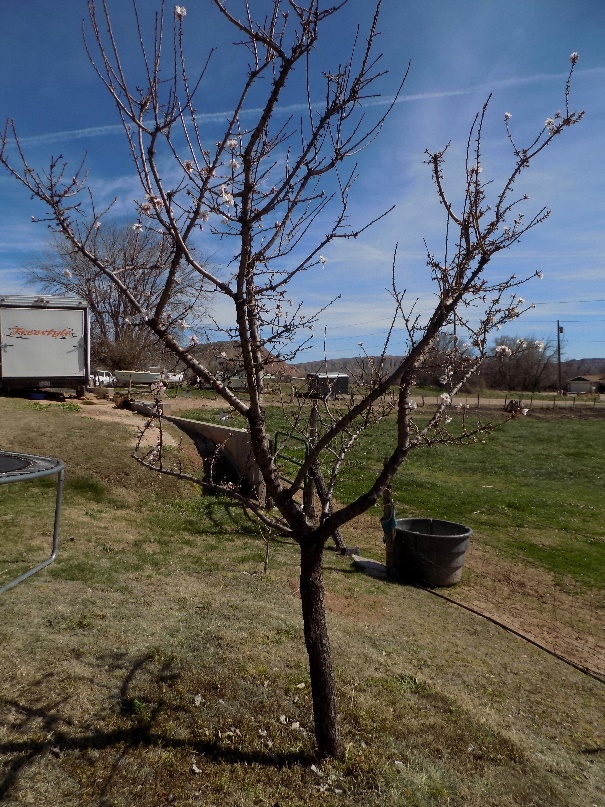
Fig. 2. A young almond tree in Washington County.
Dig a hole that is wider than it is deep. If you are planting a bare-root tree, dig the hole wider than the spread of the widest roots. If you are planting a potted tree, dig the hole roughly twice the diameter of the pot and roughly the same depth. In either case, place the tree in the hole and fill around the tree with the soil excavated. Don’t add fertilizer or other amendments to the soil before backfilling. Ensure that the graft union remains 2 to3 inches above the final soil line. Water the tree immediately after planting and water again as the soil dries afterward. Check the soil moisture with your finger every few days and water as needed. A small dike built around the tree will hold water and allow it to percolate into the soil. Each watering should be about 3 to 5 gallons of water for the first few weeks.
Initial pruning
If the tree is unbranched, prune off the top of the tree at about 30 to 36 inches above the soil line at planting. This will encourage branches to grow below the cut. If the tree has branches, remove low branches below about 30 inches and leave 4-6 evenly spaced branches. Almond trees are free standing and don’t require staking.
Initial soil care
Once the tree has settled and has begun to grow, place some sort of mulch, such as wood chips, around the base of the tree. Place the mulch in donut fashion around the tree, but don’t allow it to touch the trunk. Mulch will hold water around the roots, reduce soil heating during hot days, and reduce weed growth.
Almond Cultural Practices
Training and pruning
Almond trees require very little training and pruning. Early pruning establishes the basic framework of the tree. The objective is to have a straight trunk without branches for 30 to 40 inches with a whorl of branches at that height which will become the primary scaffold branches, and they will be permanent. These branches will produce side branches where nuts will be produced. Almonds produce fruit at the base of 1-year-old growth and on short shoots called spurs. This varies some by cultivar. Once the framework is established, only minimal pruning is required.
Fertility
Producing almonds requires a lot of energy and almonds are heavy nitrogen feeders. Young non-bearing trees should produce 12 to 18 inches of new growth per year. Mature bearing trees should still produce 6 to 12 inches of new growth per year. Obtaining this kind of growth will require additions of fertilizer. The rule of thumb is to apply 1 ounce of actual nitrogen to each tree per year of tree age, but not to exceed ½ pound of actual nitrogen per tree annually.
To calculate the amount of fertilizer to apply, divide the nitrogen needed, as per this rule, by the decimal fraction of nitrogen in the fertilizer. For example, a 3-year-old tree should receive 3 ounces of actual nitrogen. To calculate how much ammonium sulfate (21% nitrogen) to apply, divide 3 ounces by 0.21 for a total application of 14 ounces of fertilizer. For more information see: http://digitalcommons.usu.edu/cgi/viewcontent.cgi? article=2588&context=extension_curall
Evenly spread the fertilizer under the dripline of the tree. Don’t pile it up on one side of the tree. Granular fertilizers should be irrigated into the soil after application.
Initial flowering and fruiting
Don’t allow almonds to set fruit during the first 3 years following planting. During these years the tree should expend its energy producing bearing wood. Also heavy, early crops can cause branches to droop and grow in undesirable ways.
Frost protection
Almonds flower concurrently with, or a little before, peaches. Spring frosts commonly occur in this same time frame. Little can be done to protect the flowers of large mature trees. Younger trees can be protected against frost on calm nights by covering the canopy with a tarp. Secure the tarp to the soil around the base to prevent movement and to capture heat radiating from the soil. The canopy should be tarped around sunset, but when the air temperature is above 34º F. The tarp should be removed in the morning as the sun rises and the temperature rises above freezing. A burning light bulb could also be hung inside the tented canopy to provide additional heat.
Irrigation
Utah’s dry climate makes irrigation essential. Mature fruit tree roots can be extensive and deep. Mature trees benefit from less frequent, but longer, deeper irrigation. Water long enough for water to penetrate the soil to a depth of 1 foot. Then allow the soil to dry for several days (weather dependent) before irrigating again. Typical turfgrass irrigation schedules are not ideal for tree fruit irrigation since they tend to be shallow and more frequent.
Pest management
Almonds are susceptible to the same sorts of insect and disease pests that are problems for peaches and apricots. Rather than providing descriptions of these pests in this publication, links to pertinent pest descriptions are listed here.
Peach Twig Borer http://utahpests.usu.edu/ipm/htm/fruits/fruit-insectdisease/peach-twig-borer07
Greater Peach Tree Borer http://utahpests.usu.edu/ipm/htm/fruits/fruit-insectdisease/greater-peachtree-borer07
European Red Mite http://utahpests.usu.edu/ipm/htm/fruits/fruit-insectdisease/euro-red-mites97
Spider Mites http://utahpests.usu.edu/ipm/htm/fruits/fruit-insectdisease/spider-mites
Coryneum Blight http://utahpests.usu.edu/IPM/htm/fruits/fruit-insectdisease/coryneum-blight
Cytospora Canker http://utahpests.usu.edu/IPM/htm/ornamentals/lands cape-insects-and-diseases/canker/
Phytophthora Rot http://utahpests.usu.edu/IPM/htm/fruits/fruit-insectdisease/root-crown-rot/
How to Harvest and Store your Almonds
Almonds should be left to mature and dry on the tree. When harvested too early, the nuts are milky and damp. Allow them to dry on the tree before harvest, if possible. Almonds can be harvested, by hand or by shaking from the tree. For smaller trees, individual branches can be shaken by hand, causing the nuts to fall to the ground. Once harvested, the husks should be removed. At this point the nuts can be stored in a dry environment for a long time. Keeping them in air-tight containers will slow oxidation of the oils. Shelled almonds can be stored in freezer bags in the freezer indefinitely.
Why Almond Trees Fail to Bear
Almonds can fail to bear fruit for many reasons; cold winter temperatures, spring frosts, poor pollination, tree age, and pest problems. This section describes the most common problems and suggests ways to avoid them.
Winter injury
Hardy almond trees are sold by local and mail-order nurseries. These almonds would likely survive along the Wasatch Front, but nut quality is not good. Almonds that are suited for warm climates can be grown in Washington County, but these trees would not survive the cold winters of northern Utah. Temperatures below -10° F may damage the fruit buds during the winter, and temperatures below -20° F will damage the woody stems and branches of almond trees.
Spring frosts
Temperatures below 28° F during or after flowering will damage flowers and prevent fruiting. Choosing the correct site is critical to avoid spring frost injury. Tarping young trees on frosty spring nights can be effective at avoiding injury.
Pollination problems
Most almonds are not self-fruitful. Pollen to pollinate almonds must come from a different cultivar of almond or from a peach that flowers at the same time. Bees or other pollinating insects are required to move pollen for almonds. If the weather is cold, cloudy, windy, or rainy during flowering, bees do not forage well. Without insects to transfer pollen, no fruit develop.
Tree age
Almond trees, like all fruit trees, must mature before they will flower and produce nuts. Further, it is a desirable management practice to remove the flowers or immature fruit for the first 1 to 2 years after planting to allow the tree to grow without a crop. Don’t expect to harvest nuts for 4 to 6 years after planting.
Heavy pruning
Heavy pruning causes trees to produce water sprouts that are vegetative rather than fruiting. Trees that are producing vigorous vegetative growth produce few flowers. Removing 1-year-old growth also removes the tissues where flower buds are formed.
Too much fertilizer
Trees that receive too much nitrogen fertilizer produce excessive vegetative growth. This growth comes at the expense of fruit production.
Irrigation
Trees that receive too much water so that the soil is constantly saturated have stunted growth from the roots not getting enough oxygen. Trees that receive too little water cannot supply enough water to replace that lost by the leaves through transpiration. Regular irrigation with periods of soil drying in between will provide the best results.
Physical damage
Bark at the base of the tree can be damaged by small animals (mice, rabbits) feeding on the bark in the winter and by damage from lawn mowers and string trimmers. If a complete ring of bark is removed, the tree is girdled and may die, depending on the width of the girdling. To prevent physical damage, keep the area around the trunk of the tree free of grass and weeds. Do not pile mulch materials around the tree trunk. Keep vegetation around the planting mowed short, especially in the fall. You can wrap tree trunks with wire trunk guards made from an 18-inch square of ¼ or ½ inch mesh hardware cloth. Wrap the mesh around the trunk to form a cylinder and wire the ends together.
Deer will also feed on fruit trees. They tend to eat the tips of shoots in late winter or early spring. Deer may also rub against trees and rub the bark off the trunk or branches. If deer pressure is heavy, only substantial fencing with keep them out. For light pressure, repellants can be used, but these last only a few weeks until deer acclimate to the repellant. Deer can be repelled by hanging small hotel-sized bars of soap in trees. For more information on deer deterrence see: http://digitalcommons.usu.edu/cgi/viewcontent.cgi? article=2217&context=extension_curall
Published July 2017
Utah State University Extension
Peer-reviewed fact sheet
Download PDF
Authors
Teryl R. Roper and Rick Heflebower
Related Research




